Within the past two years, Taipei's Qi Lin law firm, which employs someone on a nearly full time basis to travel around Taiwan buying suspicious whiskeys, has detected at least 35 different lookalikes for the premium brand of scotch, Royal Salute. The knock-offs have gone by a wide variety of names, including Royal Charis, Royal Cross, Royal Eagle and even Viagra Royal.
A 21-year-old blend of scotch whiskies, Royal Salute was first introduced by Chivas Brothers in 1953 in honor of the coronation of Queen Elizabeth II. For a container, it took a special ceramics bottle crafted in the tradition of flasks carried by the 18th century British by a well-known workshop, Royal Doulton. The bottle was further wrapped in a velvet carrying bag and housed in a gold-embossed box.
In legalese, these kinds of packaging attributes are called "trade dress." Products which imitate other products' trade dress are classed as lookalikes or knock-offs.
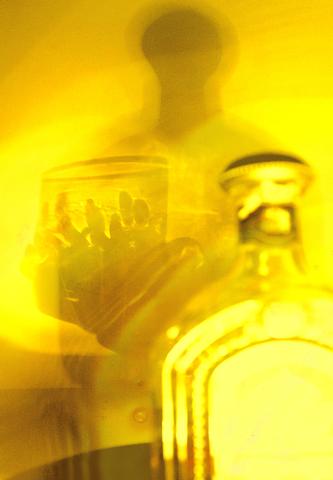
Between 1991, when Taiwan's market first opened up to foreign spirits, and January 1999, 652,000 cases of Royal Salute were imported into Taiwan. At present, individual bottles retail for around NT$2,000, though they sold for as much as NT$5,000 in the early days of liberalization.
Though there are no reliable statistics for the volume of knock-offs of Royal Salute and other premium scotch whiskies, Qi Lin said it had identified around 30 companies still actively importing such products. The firm tracked at least one of those importers bringing in 12,000 bottles, including four different brands, during a six month period.
In retail outlets, generally hypermarkets and mom-and-pop shops, the lookalikes sell for around NT$500 less than Royal Salute.
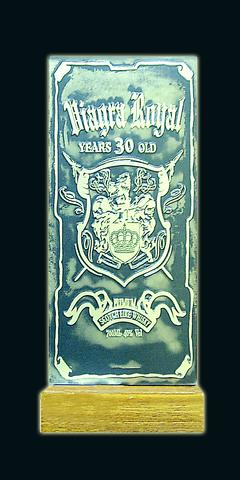
"It makes them look like a bargain," commented one industry insider, adding, "the profits are very high, that's why they sell them. Stores generally pay around NT$700 to NT$800 per bottle."
During the 1990s, the pervasiveness of lookalikes in Taiwan became an issue of concern for the Scotch Whisky Association (SWA), an organization that represents 95 percent of all scotch whisky produced, including 63 companies and brands like Glenlivet, Chivas Regal, Johnnie Walker, Ballantine's and many others.
Last year, Taiwan was the world's tenth largest market for scotch whisky, consuming 8.7 million bottles valued at around US$37 million. According to Drinks, a major distributor and retailer of alcoholic beverages in northern Taiwan, imports of scotch whisky account for 35 to 40 percent of all wine and spirits imports.
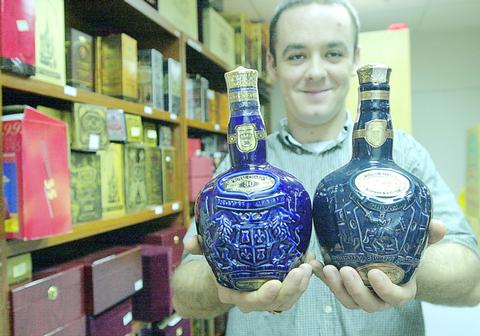
PHOTO: CHIANG YING-YING, TAIPEI TIMES
The SWA hired Qi Lin in 1996 to see what could be done about the lookalikes, and also to advance its interests in other areas of intellectual property protection and taxation. Seagram's, a major international producer and distributor of alcoholic beverages, has also since become a client of the firm.
In Taiwan, the type of protection Qi Lin is seeking for its clients' products is very much in line with the status they're afforded at home in the UK. Britain's Scotch Whisky Act 1988 defines scotch whisky as without exception produced in Scotland, made from water and malted barley, distilled to a strength no greater than 94.8 percent alcohol by volume (any greater and the distillate would become a neutral alcohol), aged in oak casks for at least three years, containing no additives other than water and carmelized sugar and bottled at a strength of at least 40 percent alcohol by volume.
The act also identifies the "whisky" in scotch whisky as spelled without an e, while other legislation describes Irish whiskey as spelled with an "e." (American whiskey also takes the "e," while Canadian whisky does not.) Furthermore, the age of a blend is determined by the youngest whisky in the blend.
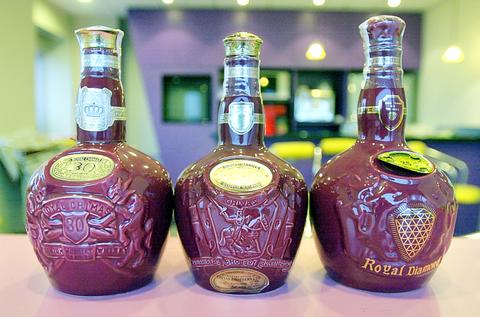
PHOTO: CHIANG YING-YING, TAIPEI TIMES
The European Community adopted Britain's definitions of scotch whisky in 1989, putting them into effect one year later. And Taiwan, ever eager to comply with international standards, will see two new laws, the Tobacco and Alcohol Administration Law and the Tobacco and Alcohol Tax Law, go into effect on Jan. 1, coinciding with its accession into the WTO.
In part due to Qi Lin's lobbying efforts through the ECCT (European Council of Commerce and Trade), the new laws will clarify several of the existing fuzzy standards the firm has identified as allowing misrepresentations in whiskey labeling. According to the firm, these basically fall within three areas.
The first is geographical indicators, packaging elements that indicate a product's origin. In the case of spirits, the firm argues that words and word fragments like "glen" or "scot" as part of the product name and design elements on labels like tartan plaids are clear indications of Scottish origins and should not be used by products coming from other places. More flagrant violations include labels using phrases like "taste of Scotland" or "Scotch type whisky."
The second area of misrepresentation is geographical origins, the place from which the bottle professes to come. And the third is the age of the whisky, which is often misrepresented with phrases like "made with 35-year-old premium whisky" or simply a large numeral imprinted on the bottle.
`Most people can't read it'
Another issue is the use of the English language in labeling. Few premium whiskies adopt Chinese labels, and lookalike producers take advantage of the fact.
"If the bottle is in English, most people can't read it," said Crystin Chiang
Though the new laws will not bridge the language gap, they will close some existing loopholes, but not all. The legislation proscribes nearly all misleading claims related to age or geography, but only on labels attached to the bottles.
"According to the Ministry of Finance's interpretation of the new law, labeling only includes the label affixed to the bottles, not the cartons or other exterior packaging," said Marcus Clinch, a legal consultant at Qi Lin.
The new laws will also remain somewhat unclear in their definition of whiskys and blends, as it does not define a maximum distilling strength. Distilling strength is important, because spirits distilled at greater purity than 95 percent lose their individual flavor and become what is known as neutral alcohol, a nearly pure and flavorless distillate that can be made from grain, sugar, potatoes or any other starch.
One brand currently on the market is labeled as a "Superior Whisky," though in reality it contains less than 3 percent scotch whisky. The remainder of its 40 percent alcoholic strength is made up of neutral alcohol, and its coloring and flavoring are artificial. Furthermore, Taiwan's Fair Trade Commission (FTC) ruled that the product's labeling was not in violation of any current laws as the small print on the label revealed its true contents.
Determining the makeup of these would-be whiskeys is not always that simple, however.
Qi Lin, after obtaining a newfound knock-off, must often send a sample of the spirit to the Scotch Whisky Research Institute (SWRI), an independent facility in Edinburgh, Scotland. The institute's analyses reveal percentages of neutral alcohol, scotch whisky, additives and, within certain limits, a whisky's age.
One sample from a Taiwan lookalike whisky has even revealed traces of the carcinogen benzene. Though small, the amounts were found in excess of the acceptable standard for drinking water (no acceptable standard for benzene levels in whiskey has been determined). Qi Lin has forwarded the sample on to the national Department of Health, where an investigation is now pending.
Points of origin for the actual spirits inside the lookalike packaging include distilleries all over the world, namely continental Europe, the US, India and especially the Philippines. One frequent producer of Royal Salute knock-offs, the Destileria Limtuaco of Quezon, the Philippines, has even professed to have an "accelerated aging process," which allows it to label 8-year-old whiskys as 25 to 35-year-old whiskys. SWRI analysis of its "Royal Charis 30 Whisky" however, found the product to be less than 10 years old.
When contacted by phone and fax by the Taipei Times, the distillery's officials refused to comment on Royal Charis or the accelerated aging process.
Avoiding court
Royal Charis, however, was recently ruled on by Taiwan's Fair Trade Commission (July 31, 2000) and the Taipei District Court (Oct. 15, 2001) in cases filed by Qi Lin against the spirits' importer, Sum Star International.
Generally, Qi Lin avoids going to court, preferring out of court settlements. Though the firm could not reveal exact number of cases, Clinch said it has settled with 10 to 15 importers, has referred around 10 others to the Fair Trade Commission (FTC) for investigation and has referred fewer than 10 to the Taiwan Tobacco and Wine Monopoly Bureau (TTWB).
"First, we try to alert importers carrying mislabeled products that they're doing something wrong and ask them to stop selling those products. If they ignore us, as they sometimes do, we then file a complaint with either the Fair Trade Commission or the TTWB, depending on the circumstances of the case. Going to court is generally the last option," said Robin Winkler, head legal consultant at Qi Lin.
Sum Star's insistence on the legitimacy of Royal Charis, however, forced Qi Lin to appeal to higher boards of review. The FTC's disposition on the case found that the product made "false and misleading presentations as to age, alcohol strength, and areas marketed on labeling, packaging, hangtags and an advertisement."
Sum Star was ordered to stop selling Royal Charis until the product's trade dress was suitably altered and fined NT$400,000.
In the civil court case, Qi Lin further sought damages of NT$100 million and a complete recall of all Royal Charis in the marketplace. While the court's decision ordered Sum Star to stop selling, transporting, exporting, importing and in any way using packaging for Royal Charis, it neither granted damages nor held Sum Star responsible for products the company had already distributed.
As Qi Lin continues to fight similar battles, Winkler says the firm will continue to focus on improving legislation, thereby giving the law the correct tools to deal with knock-off products.
"Businesses will do what they can get away with, where the law permits them to do so. And not just in Taiwan, everywhere," he said.
Also, instead of placing the majority of the blame on enforcement, as many do with intellectual property piracy issues, Winkler believes that deficiencies in legislation and enforcement go hand in hand, with laws providing a framework for what can be enforced.
"It's gotten a little better," he said, looking back on the last four years, but also knowing that more improvements need to take place. And that said, he stated his goal: "Once legislation is in place, we hope products will be excluded at customs so they won't be incorporated into the domestic market."
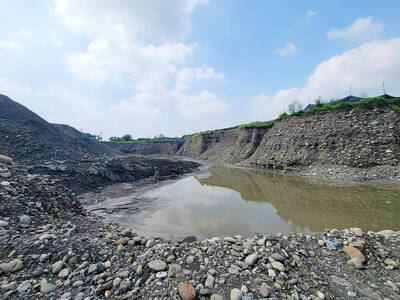
Last week the story of the giant illegal crater dug in Kaohsiung’s Meinong District (美濃) emerged into the public consciousness. The site was used for sand and gravel extraction, and then filled with construction waste. Locals referred to it sardonically as the “Meinong Grand Canyon,” according to media reports, because it was 2 hectares in length and 10 meters deep. The land involved included both state-owned and local farm land. Local media said that the site had generated NT$300 million in profits, against fines of a few million and the loss of some excavators. OFFICIAL CORRUPTION? The site had been seized
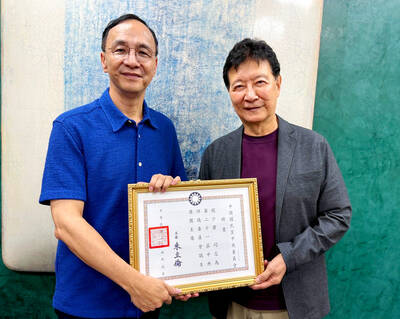
Next week, candidates will officially register to run for chair of the Chinese Nationalist Party (KMT). By the end of Friday, we will know who has registered for the Oct. 18 election. The number of declared candidates has been fluctuating daily. Some candidates registering may be disqualified, so the final list may be in flux for weeks. The list of likely candidates ranges from deep blue to deeper blue to deepest blue, bordering on red (pro-Chinese Communist Party, CCP). Unless current Chairman Eric Chu (朱立倫) can be convinced to run for re-election, the party looks likely to shift towards more hardline
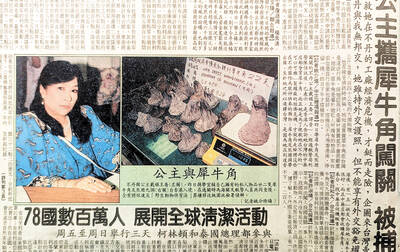
Sept. 15 to Sept. 21 A Bhutanese princess caught at Taoyuan Airport with 22 rhino horns — worth about NT$31 million today — might have been just another curious front-page story. But the Sept. 17, 1993 incident came at a sensitive moment. Taiwan, dubbed “Die-wan” by the British conservationist group Environmental Investigation Agency (EIA), was under international fire for being a major hub for rhino horn. Just 10 days earlier, US secretary of the interior Bruce Babbitt had recommended sanctions against Taiwan for its “failure to end its participation in rhinoceros horn trade.” Even though Taiwan had restricted imports since 1985 and enacted
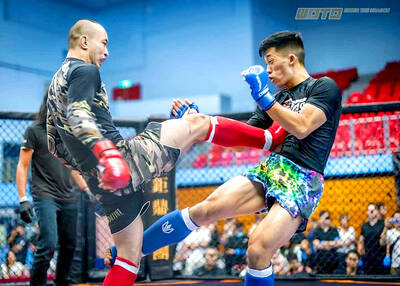
Enter the Dragon 13 will bring Taiwan’s first taste of Dirty Boxing Sunday at Taipei Gymnasium, one highlight of a mixed-rules card blending new formats with traditional MMA. The undercard starts at 10:30am, with the main card beginning at 4pm. Tickets are NT$1,200. Dirty Boxing is a US-born ruleset popularized by fighters Mike Perry and Jon Jones as an alternative to boxing. The format has gained traction overseas, with its inaugural championship streamed free to millions on YouTube, Facebook and Instagram. Taiwan’s version allows punches and elbows with clinch striking, but bans kicks, knees and takedowns. The rules are stricter than the